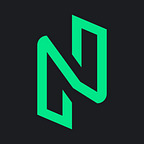Microservices represent the next evolutionary leap towards flexible, fast and nimble blockchains with cross-chain capabilities interacting with countless applications. Both Blockchain and microservice architecture are modular and encourage interaction between constituent parts.
This is the next step in providing blockchains for everybody and making the technology available for any business, large or small.
NULS is designed around the microservices module concept. These modules need to constantly pass data back and forth. A sturdy, light-weight module with lightning-fast messaging is needed to facilitate. With the NULS ecosystem — this middleman is Nulstar. Nulstar is the master communicator module that passes messages between the individual modules.
Nulstar is the bottom communication layer of NULS.
What Are Microservices?
Microservices is a modular architecture where services are independent processes communicating with each other and over a network to achieve a common goals. It’s the opposite of the monolith application which uses a large or gigantic program to provide several or many functions.
- When a monolithic application requires an update for the tiniest bug, the entire application must be updated.
- Upgrading a single feature in a monolith architecture can interfere with code in other parts of the application, making the upgrade process difficult.
The microservice architecture is different in the sense that it portrays a network-oriented concept that doesn’t rely on a single module. It incorporates multiple independent and interdependent services serving application goals.
This collection of multiple services can be implemented using different programming languages. A Python module can interact with a Java module. These services are usually small in size and developed autonomously. They are decentralized and often deployed independently.
Several big companies have already moved from monolithic infrastructures to microservice architectures, as they understood that it was difficult to scale by remaining with the initial configuration. Some examples include Amazon, Uber, and Netflix, among others. Here is the Netflix architecture after the adoption of microservices:
NULS and Microservices
NULS adopts the benefits of microservices in the blockchain space — which by its nature encourages decentralization and automation. The scaling capabilities and adaptability of the first blockchains leave much to be desired.
For example, while Ethereum enables the creation of decentralized applications and new tokens, developers have to learn Solidity or similar smart contract language. They must learn quite a bit before they grasp the intricacies of Ethereum. This is ultimately reflected in the cost and effort of development.
Blockchain-in-a-Box
NULS offers a blockchain-in-a-box solution that relies on six basic modules. This modular approach eliminates the need for developers to learn complex technical concepts, cryptology and consensus mechanisms. A business system, decentralized application, or any kind of application can be integrated with its own blockchain quickly.
Nulstar is a C++ port of the NULS protocol that relies on and supports microservices. Think of Nulstar as a central phone office switchboard that routes calls to where they need to go. Each message enters and leaves in format that all modules understand.
Modules can be developed in multiple programming languages as long as they are able to send and receive messages formatted to the Nulstar spec. Each module is basically its own application and can even run in its own environment. This allows enterprises to customize a blockchain for their specific needs and not bother with an overly-complex infrastructure.
Nulstar enables enterprises to integrate modules that have little to do with blockchain, including scheduling, accounting, payroll, and more. The thing that unites all these modules is that they communicate with each other based on a set of rules using websockets and JSON as the initial transport format.
Eventually, Nulstar will allow developers to share modules in a common repository, allowing businesses and other developers to use these modules and build on them.
Currently, NULS offers two products that allow anyone to build new chains by selecting existing modules. These are ChainFactory and ChainBox.
In summary, here are the benefits of microservice architecture:
- Resilience — In monolithic, the entire application can fail if a single part fails. Not true with microservices where service independence adds to the resilience of the entire infrastructure.
- Scaling — Each service can be scaled independently without disturbing the entire codebase (as with monolithic applications).
- Easy Upgrades — If a business experiences a surge in demand for a particular service, it can upgrade just that service while maintaining the availability of everything else.
- Distributed development — Small, independent teams responsible for just their services are encouraged. This speeds up autonomous team development.
- More technology options– Teams can choose the best tool that meets their needs. No single model or language is in charge.
In the end, a blockchain network powered by a microservice architecture is much more scalable, agile, adaptable, and resilient.
Join us and explore NULS
- Website: https://nuls.io/
- Telegram: https://t.me/Nulsio
- Discord: https://discord.gg/uZ3QcxW
- Steemit: https://steemit.com/@nuls
- Twitter: https://twitter.com/@nuls
- Facebook: https://www.facebook.com/nulscommunity/
- Reddit: https://www.reddit.com/r/nulsservice/
- Github: https://github.com/nuls-io/nuls
